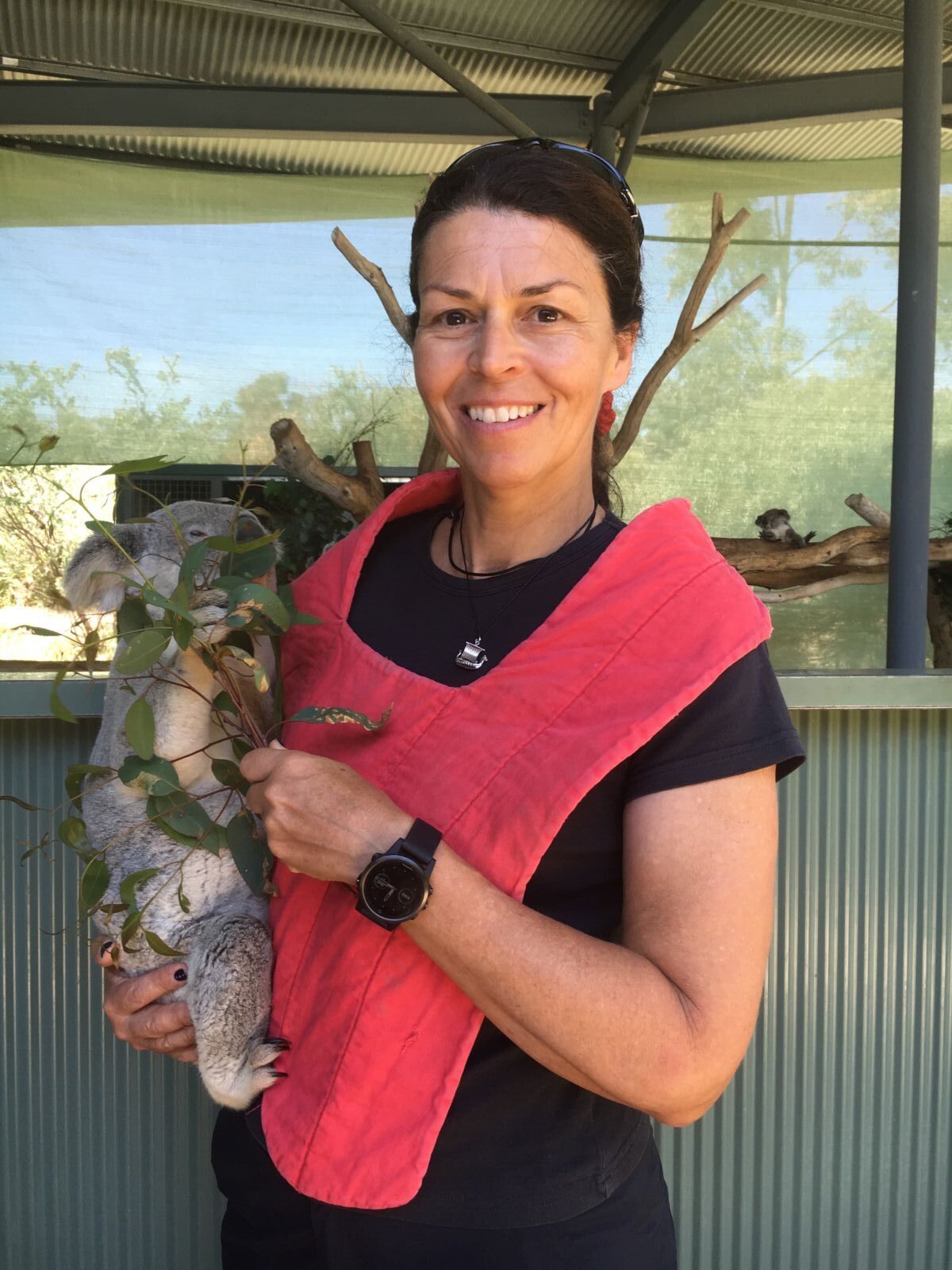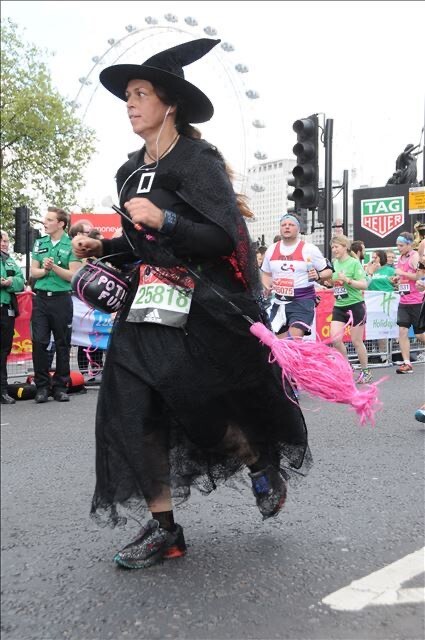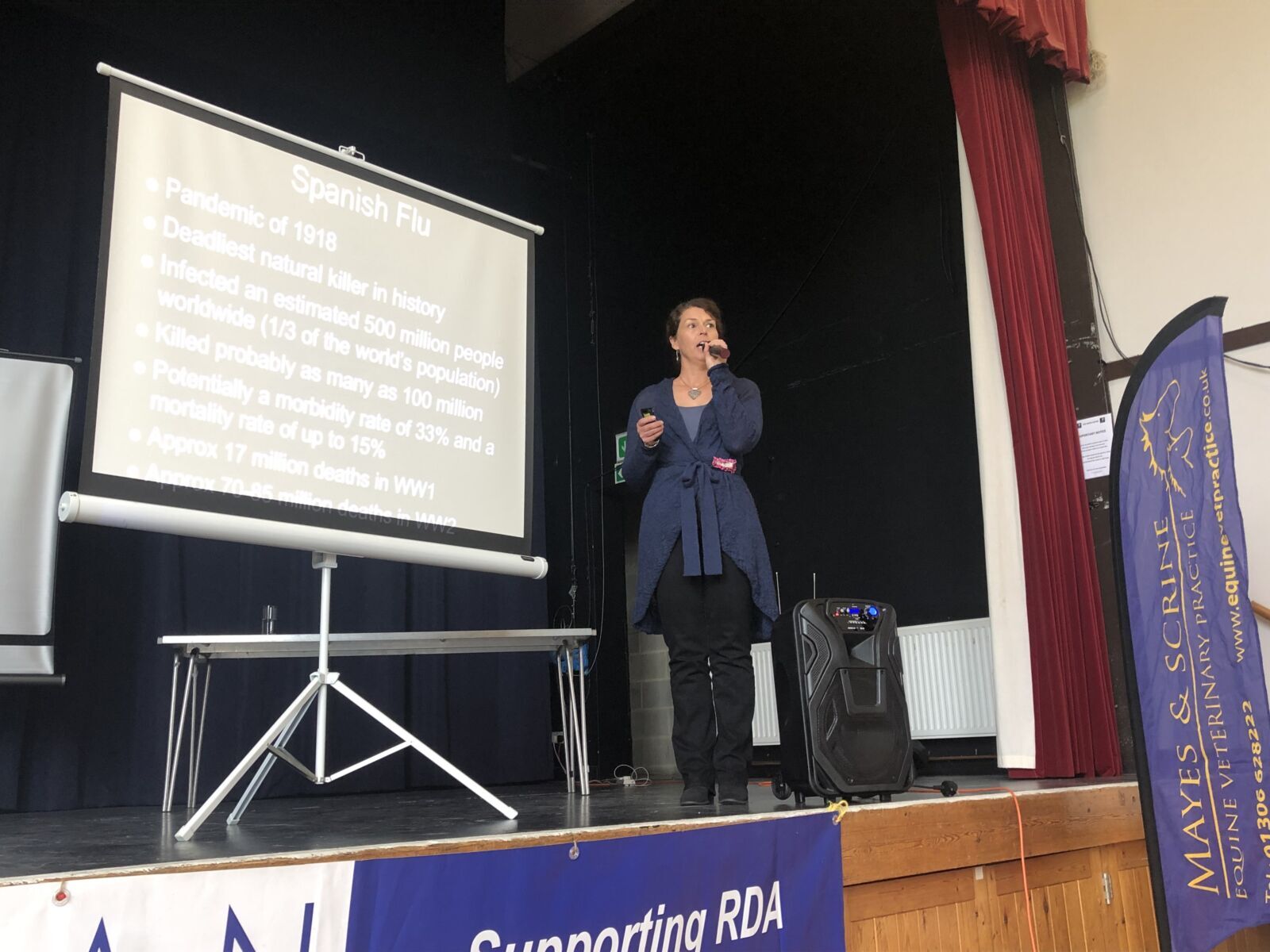Meet Dr Judy Scrine, Founder and Chair of the Vet Sustain Equine Subgroup
Dr Judy Scrine MA VetMB ACMT MRCVS, is the founder and chair of our Vet Sustain Equine Subgroup, the VES, which sits alongside our Curriculum, Food and Farming and Greener Veterinary Practice Working Groups. Judy is an experienced equine veterinary surgeon, now retired from clinical practice due to injury, and working in sustainability within the veterinary profession, with a particular emphasis on equine. Here we will find out a little more about Judy and her sustainability journey.
Vet Sustain
Hi Judy, tell us a little about yourself and your current roles
I am an equine veterinary surgeon, retired from clinical practice due to injury, and now working in sustainability within the veterinary profession, with a particular emphasis on equine.
I currently work from home and have a number of different roles:
I am the chair of Vet Sustain Equine Subgroup
I have a particular interest in equine veterinary sustainability, with the aim of encouraging equine veterinary teams not to be daunted by sustainability but to embrace the opportunity.
I aim to drive the message home that we should be thinking about all the different aspects of sustainability rather than just environmental issues, and that embracing the four pillars of sustainability leads to many advantages beyond just aiming for Net Zero.
I hope to enthuse and empower equine veterinary teams to get their own houses (literally), and their veterinary practices on a more sustainable footing, whilst taking the message out to the wider equine community, leading by example. We’ve all made mistakes but we should admit them, and explain that we are endeavouring to learn from them and do better.
I like the strategy "carrots not whips"!
I am an Equine Special Advisor for Restore Nature
Restore Nature combines an exceptional blend of legal, ecological, veterinary and media expertise that enable us to drive nature-friendly policy campaigns and practical nature restoration programmes with urgency and skill towards a hopeful future.
I am a massage therapist
Focusing on chronic conditions including fibromyalgia and long covid, chronic pain issues, and poor performance and injury prevention in athletes, particularly endurance runners.

I am also a BVA Electoral College Member trying to do my bit for the future of the veterinary professions.
What does a typical day look like for you?
In terms of driving veterinary sustainability - i spend time networking and educating myself about sustainability, mentorship and behavioural modification, to equip me with the knowledge and skills required to chair the equine subgroup of Vet Sustain and for my Restore Nature role.
I enjoy working with other VES group members to create resources and a toolkit for equine veterinary teams to access, with the aim of concentrating resources in one accessible place, and making sustainability less daunting, and more genuine, in a way that avoids greenwash.
I am acting as a liaison and bridging point with other sustainability groups such as the BEVA sustainability working group, to help avoid duplication of effort and to capitalise on the respective strengths of each.
With Restore Nature, i am working on identifying critical issues where nature needs a stronger voice and working with the incredible Restore Nature team to bring action and urgency to the situation. I liaise with local groups to prevent environmentally disastrous projects from going ahead without suitable sustainability measures being put in place and enforced, for example i have been inputting to the Highsted Park development proposal near Sittingbourne in Kent.
For the clinical massage therapy i offer clinical consultations applying the biopsychosocial model, with my human patients, working from my massage suite within my own home.
I care role for my lovely amazing 98 year old father. And i am working on a more sustainable lifestyle domestically, gardening for sustainability and food production, implementing bee friendly and regenerative practices to encourage biodiversity increase.
I follow a fitness programme for marathon running and importantly i fit in some down time! I very much enjoy our beautiful home, have a fabulous circle of friends and am working through the 'A to Z' of dates with my gorgeous husband. We work through the alphabet each year, thinking outside the box to find interesting and unusual things to do. In 2025 so far, A was Abba Voyage, B is to be Battersea Power Station Lift 109!

What is your favourite part of your job?
Veterinary sustainability - the fact that my role affords me the ability to inspire, empower and facilitate others towards increasing sustainability. Taking sustainability to those not previously engaged with it is very important to me personally. There is absolutely no point in just preaching to the converted and indulging in rhetoric. I am motivated by the fact that what I am doing is equipping me with more knowledge, so putting me into a better position to have climate change debates, hopefully encouraging society tipping points where improved sustainability practices will become the accepted norm.
I also really appreciate my massage therapy role - to be able to help those in chronic pain or suffering debilitating chronic illnesses is just fantastic. I find approaching such cases in a holistic way, and empowering clients to take control and help themselves, is incredibly rewarding; as is enabling athletes frustrated by injury to get back on track and continue to do what they love.
What is the most challenging part of your job?
Working with volunteers, most of whom are very busy people.
Avoiding preaching to the converted, and rhetoric, but actually creating something concrete that will indeed help make a difference.
Being an effective and inspirational leader - i've got a long way to go on this one!
Do you have any tips for achieving a good work-life balance?
Looking back at my life pre-injury, there were a lot of pressures on me that really did have a negative impact on my work life balance, and striving hard to achieve that balance and still do all that was expected of me (plus the good ol’ menopause) led to burnout. The injury, and other health issues in myself and in my family, have led me to reflect on how I should have pushed back against these pressures a lot more and not been so vulnerable to them. I really wish I had not been so physically hard on myself in the workplace too.
If anyone in a veterinary team asks to reduce their hours or to work in a different way, we really should listen and do everything we can to accommodate them.
A very important part of sustainability for me is staff health and wellbeing, so senior members of veterinary teams need to remember that they shouldn't expect to inflict their own lifestyle and work life balance on others. It doesn't matter that they did a 1:2 for years and worked 23 hours a day and that they live to work rather than work to live. It is not appropriate to expect others to do the same.
We need to take control of our own destinies, and be honest with ourselves here, not hiding behind excuses. You only get one crack at this life.
How do veterinary professionals currently help to drive sustainability?
We are in the fortunate position of being an educated group of people operating at the junction between humans, animals and the environment. I think we each have five levels of influence; domestic, local community, professional, wider community and political, and should believe in ourselves that we can make a difference at every one of these levels.

In terms of professional responsibility, each vet is responsible for patients representing a large carbon pawprint or hoofprint - the average horse vet is likely responsible for 26 tonnes of carbon hoofprint. Careful and meaningful advice to clients could have a very significant impact. This is in addition to the carbon savings that can be made in our own domestic situation, and that of our practices.
We can use procurement choices as a way of pressuring suppliers and waste stream managers to look to their level of sustainability.
We can act as ambassadors for change. Every change matters, however small.
What do you feel are the major contributors to drive sustainability in the veterinary sector?
Again our position at the junction of humans, animals and environment puts us in a potentially very influential position. Whilst it can be hard to believe this at times (thinking CMA!), we are in a trusted profession, so what we say does carry weight.
Major opportunities are to ensure that the changes we are making are very measurable. How much have we reduced our clinical waste by? How much have we reduced our gaseous anaesthetics by? What is our carbon footprint (we could all start using the Vet Sustain Carbon Calculator!) and how does it compare with others? Benchmarking is key.
We can share case studies, not only of what worked, but what didn’t work. We don’t need to be judgmental or repeat mistakes.
We can network and put like minded people in touch with each other so no one feels isolated and that what they’re doing is futile.
We have a CPD requirement we can exploit. We can work to ensure sustainability becomes an entrenched part of veterinary CPD streams, not in a way that people can choose not to engage, but shoehorned politely and subtly into the main streams.
Finding the right incentives for different people and exploiting them. I firmly believe that increasing regulation will not work, and nor will expecting people to do “the right thing”. We can also shamelessly use the available levers, such as Practice Standards compliance, CPD requirement etc. We must publicise the many other advantages of becoming more sustainable, such as financial incentives, positive effects on staff health and wellbeing, improved staff recruitment and retention, client draw etc.
What are your top tips for veterinary professionals wishing to take the first steps to drive sustainability in their roles?
Do not be afraid to reach out for help. It’s up to us at Vet Sustain to make that help very available, and to make sure we get the message out there about it.
- Aim for easy wins and don’t try and fix everything all at once
- Find ways to incentivise the different members of the team - it won’t be one size fits all!
- Appoint a 'Sustainability Champion', or preferably 'Champions'. Put them in touch with a network of equivalent individuals in other practices. Ensure their suggestions are heeded and that they feel supported
- Ensure the senior management team is fully on board
- Embrace sustainability CPD
- Keep the clients informed of what is being done and why
For example: reduce gaseous anaesthetic use as much as possible, and explore the use of technologies such as Sagetech to minimise the amount reaching the environment. Gaseous anaesthetics have a disproportionately vast impact. One unit of isoflurane in the atmosphere will have over 500 times the Global Warming Potential (GWP100) of one unit of carbon dioxide. There are many ways to easily reduce the amount used. How can we do this? We should question if general anaesthetic is required in the first place. If it is, then minimise the amount required:- Use TIVA where possible, improved pain relief, use of local anaesthesia, epidurals and nerve blocks. Rebreathing (circle) systems. Optimally efficient surgery planning and execution, and well trained and organised surgical teams. Careful maintenance of all anaesthetic equipment. Other advantages of doing this include; human safety - significantly reduced gaseous anaesthetic exposure; patient safety - shortened surgery times, improved equipment maintenance conferring greater anaesthetic control, lighter plane of anaesthesia; improved patient analgesia; improved consideration as to the necessity of general anaesthesia in the first place.
If you could wave a magic wand and make one improvement to drive the sustainability impact of the veterinary profession, what would it be?
Have all veterinary vehicles fuelled by hydrogen, and all the necessary investment and roll out of infrastructure to make this fully workable. Whilst I’m at it, all road surfaces to be photovoltaic cells. The technology exists. Why don’t we use it?
I realise this doesn’t really answer the question! So, a cheat with two things:-
Concentrate on reducing the need for firefighting type care in veterinary practice. Responsible animal breeding and preventative medicine to promote animal welfare and prevent animals breaking or becoming diseased in the first place. No unnecessary surgeries, or those performed just to speed the recovery process rather than being totally necessary for it.
Stop all overfeeding across the board, and optimise nutrition. Let us make the malnourished, overfed couch potato of any species, including human, become a thing of the past.